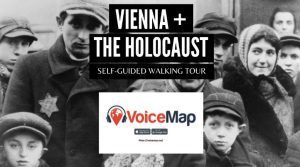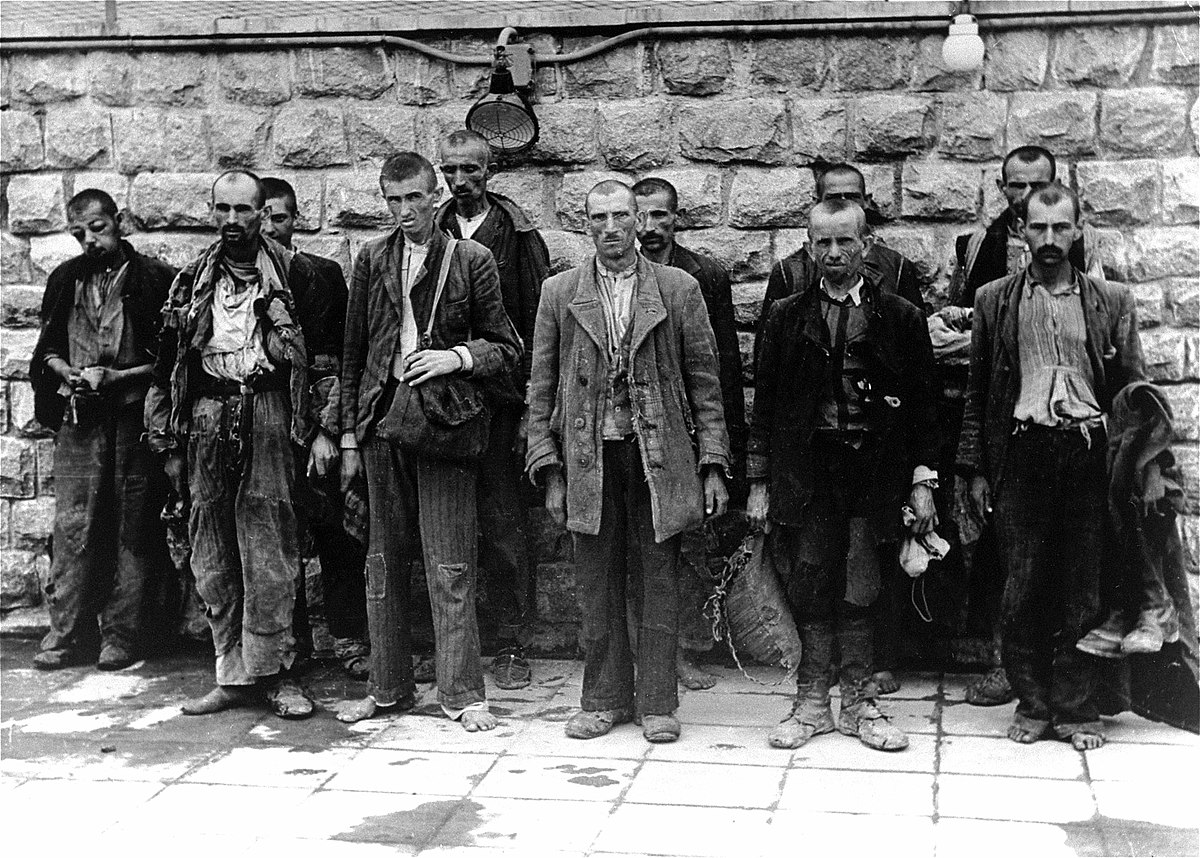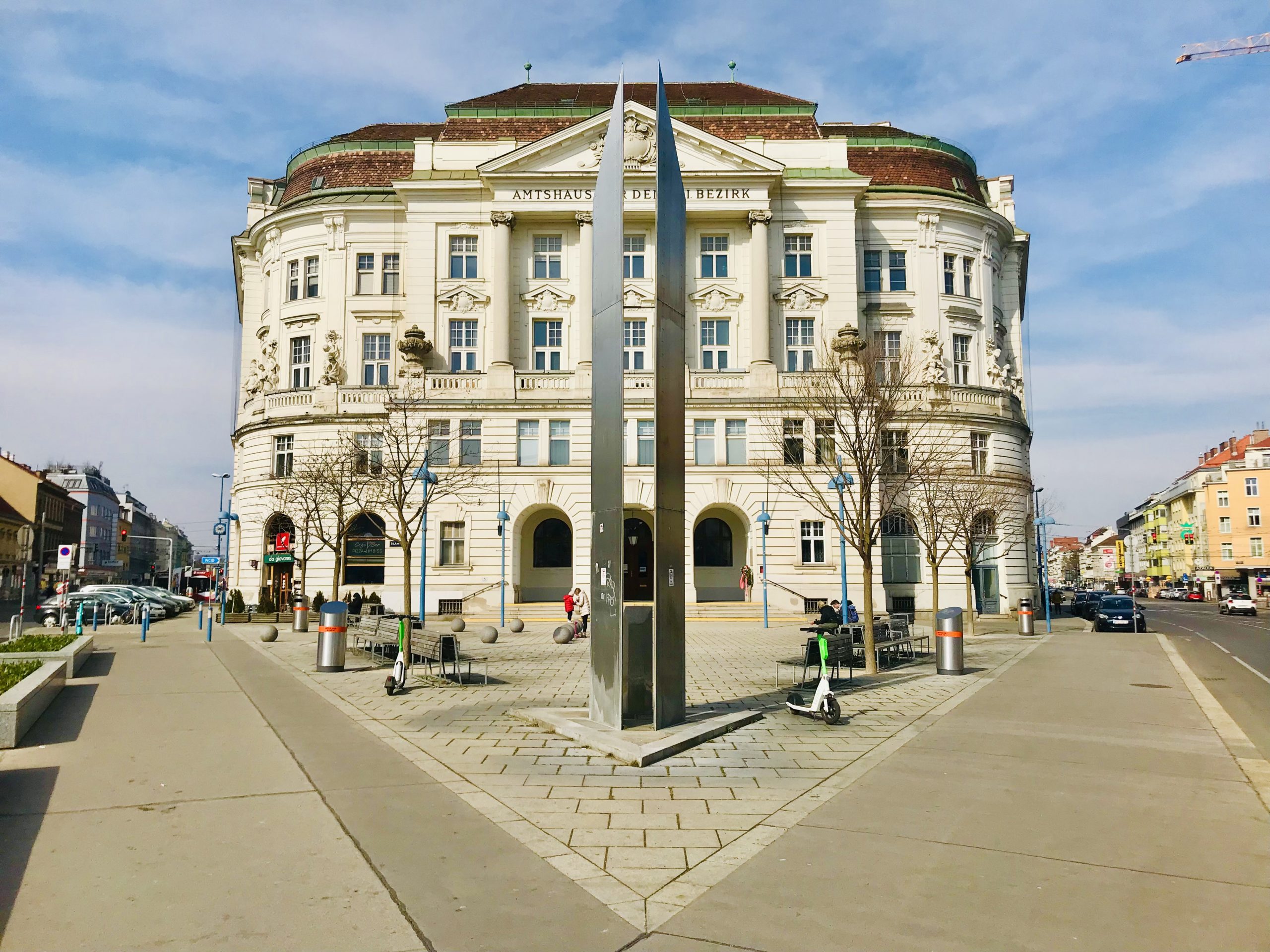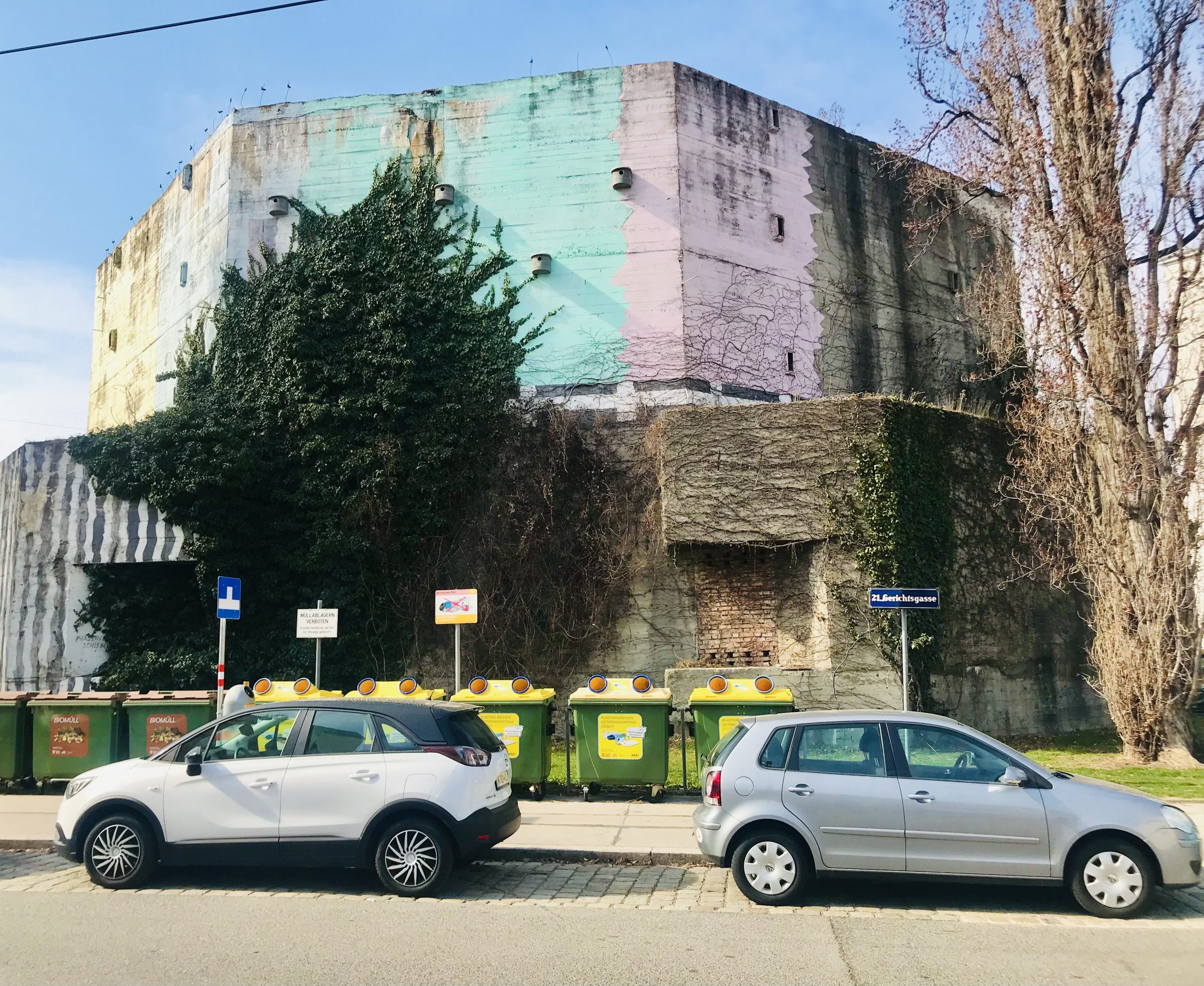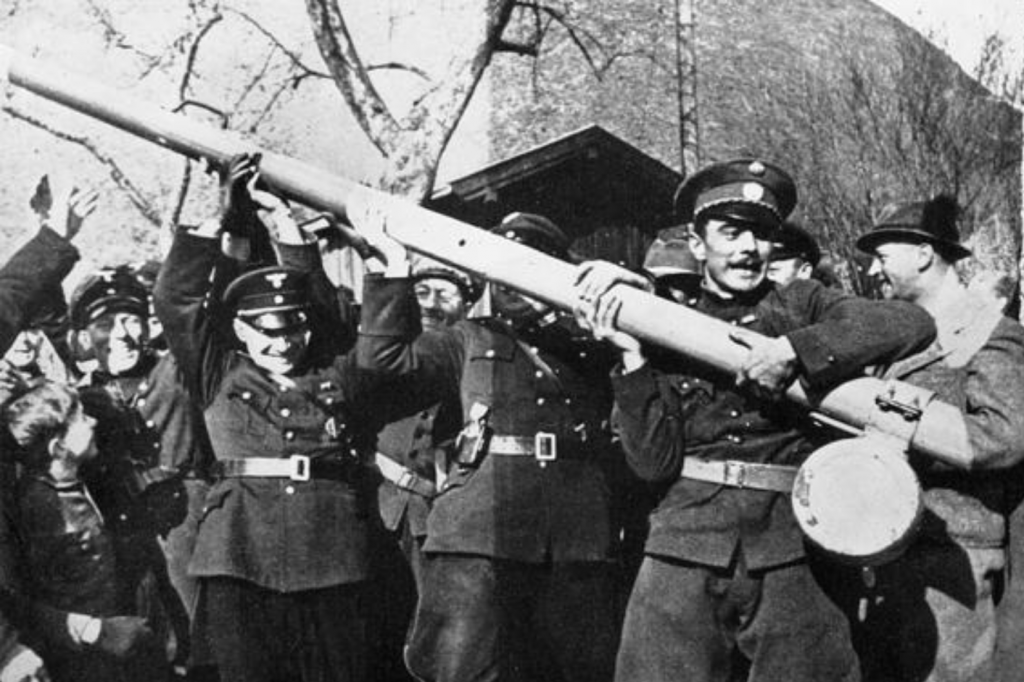
BRIEF OVERVIEW OF THE ANSCHLUSS AND IMPACT ON JEWISH VIENNA
12 MARCH 1938
Before World War 2 and the Holocaust, some 200,000 Jews lived and flourished in Vienna. On 12 March 1938, life changed dramatically when German troops crossed the border in Kufstein. Germany then consumed Austria during the Anschluss (the political “union” of Austria with Germany, through annexation.) Shortly after announcing the Anschluss, Nazi leadership soon arrived in Vienna. Life in Jewish Vienna would never be the same again.
Arrests in Vienna started immediately. So called “enemies of the state” (political opposition, vocal critics, communists, and catholics) were quickly rounded up. They were imprisoned, tortured and swiftly sent to the concentration camps.
15 MARCH 1938
On 15 March 1938, Hitler triumphantly led a parade of motorized vehicles and soldiers down Mariahilferstrasse and around the Ringstrasse. He publicly declared the Anschluss at the Heldenplatz to 200,000 jubilant supporters. Austria was no more.
ESCAPE
Once in power, the Nazis quickly implemented their anti-Semitic policies of hate known as the Nuremberg Laws. The goal of these racial laws was to exclude Jews from all aspects of society.
By 1939, approximately 130,000 Jews had fled Austria seeking refuge in whatever nation would accept them. In exchange for their lives, these families were forced to turn their property and possessions over to the Nazis.
DEVASTATION
In Vienna, under the direction of Adolf Eichmann, the Nazis rounded up the remaining 70,000 Jews and sent them to their deaths in the concentration camps. Tragically, only 1 in 7 Austrian Jews would survive the Holocaust. Today there is little left of the pre-war Jewish community in Vienna.
RECOVERY
Of the 94 synagogues and temples widely used before the Nazi occupation, only one has survived — the Stadttempel (or City Temple) in Vienna’s historic 1st District. For decades, Austria has struggled to come to terms with its role in the Holocaust. Today, the small but proud Jewish community remaining in Vienna has responded in force — working with artists to ensure the world never forgets.
PERSPECTIVE
It would be unthinkable today to imagine a parade of German soldiers, let alone Nazi leadership, triumphantly making their way down the fashionable Mariahilferstrasse or around the glorious Ringstrasse. Yet these events did happen.
What was it that compelled throngs of jubilant Viennese to line the streets of the city anticipating the arrival of Hitler? What led to a crowd of 200,000 gathering at the Heldenplatz to hear the words of a dictator, tyrant, and mass murderer?
The photographs below contain scenes of German troops parading through the well known streets and parks in Vienna: Mariahilferstrasse, the Ringstrasse, and in the Heldenplatz.
Although these are images of the past, they are clear reminders of what can happen when absolute power goes unchecked.
MARIAHILFERSTRASSE, 6th District
“I saw Adolf Hitler with my own eyes (in Vienna in his motorcade on Mariahilferstrasse) from a distance of perhaps twenty yards. I could have leaped on him and hit him with all of my strength… except we were separated by rows of cheering, rapturous people who would have torn my heart out before I could get near him.
It was March 16, 1938. Four days earlier, the German army entered Austria, and Austria ceased to exist. The world cringed for a moment and then went about its own business, which it still imagined was separate from ours.”
Leap Into Darkness: Seven Years on the Run in Wartime Europe by Leo Bretholz
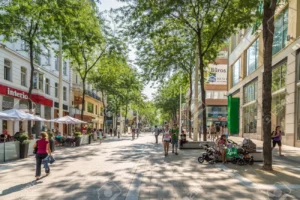
The fashionable Mariahilferstrasse shopping district today.

Jubilant crowds salute the Nazis as they pass through Mariahilferstrasse.

Cheering crowds respond as German troops parade through Mariahilferstrasse.
DIRECTIONS
RINGSTRASSE, 1st District
“As Hitler passed by, men and women hung out of every window and massed on the roofs of houses. The streets were packed. Church bells pealed. The SS men on the running boards of the cars looked worriedly around for possible assassins. But flowers were the only missiles.
His car pulled up in front of the Hotel Imperial. He could have stayed in one of the Habsburg palaces, but according to one account, picked the Imperial because he once had a job there shoveling snow in the winter while the aristocracy swept inside for gala dinners. At seven o’clock, Hitler styepped onto the balcony outside his suite to deliver a brief address.”
The Setting of the Pearl: Vienna Under Hitler by Thomas Weyr
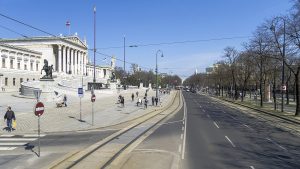
The Ringstrasse today with the Parliament and Volkspark.

Crowds of enthusiastic Viennese line the Ringstrasse waiting for Hitler and his motorcade.
DIRECTIONS
HELDENPLATZ, 1st District
“Hitler’s speech at 11:00 a.m. on Tuesday, March 15, on the Heldenplatz was the high point of the celebration. In the room of the Neue Hofburg — the palace Emperor Franz Josef had begun building in 1887 and completed in 1913 — behind the balcony overlooking the square… Hitler savored the moment as he strode to the microphone amid deafening cheers of the crowd. The ovation was endless.”The Setting of the Pearl: Vienna Under Hitler by Thomas Weyr
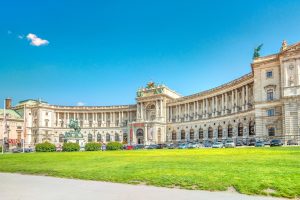
The Heldenplatz today.
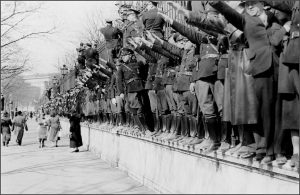
Throngs of people enthusiastically outside of the Heldenplatz waiting for Hitler to speak.
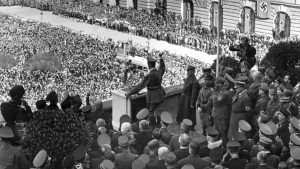
Delivering the Anschluss speech to 200,000 at the Heldenplatz.
DIRECTIONS
NEAR THIS PLACE
VOICEMAP | VIENNA SELF GUIDED WALKING TOUR. Want to learn how the Mossad operation to bring Nazis like Adolf Eichmann to justice originated in Vienna? Check out our VoiceMap self guided walking tour: VIENNA + THE HOLOCAUST: FROM TRAGEDY TO JUSTICE. You can preview it for FREE. Start point is Nestroyplatz on the U1 red line in the 2nd District.
BOOKSHELF
![]()



